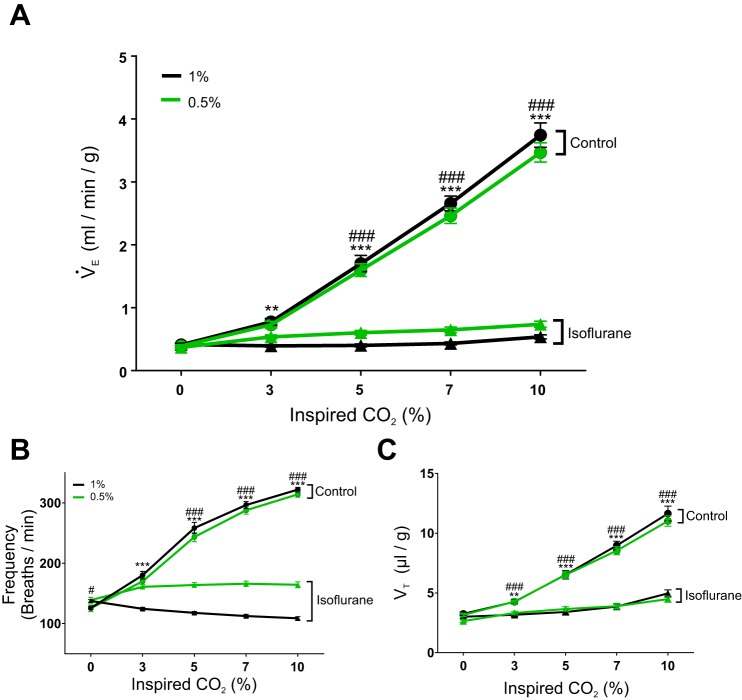Fig. 1.
Isoflurane at a subtherapeutic dose markedly reduced the hypercapnic ventilatory response (HCVR) in adult mice. A: 1% isoflurane (black lines) reduced the slope of minute ventilation (V̇e) as the percentage of CO2 increased in C57Bl/6 mice (F4,56 = 182.60, P < 0.001, n = 15). Similarly, 0.5% isoflurane (green lines) reduced the slope of V̇e as the percentage of CO2 increased in C57Bl/6 mice (F4,56 = 183.10, P < 0.001, n = 15). B: the increased respiratory frequency (FR) in response to elevated CO2 in control conditions was reversed in 1% isoflurane (black lines; F4,56 = 366.20, P < 0.001, n = 15). Isoflurane at 0.5% also reduced the increased FR in response to elevated CO2 (green lines; F4,56 = 199.3, P < 0.001, n = 15). C: anesthesia reduced the increase in tidal volume (VT) as CO2 levels rose in both 1% (black lines; F4,56 = 85.07, P < 0.001, n = 15) and 0.5% isoflurane (F4,56 = 112.20, P < 0.001, n = 15). **P < 0.05, ***P < 0.001 for 1% isoflurane (black lines); #P < 0.5, ###P < 0.001 for 0.5% isoflurane (green lines).

